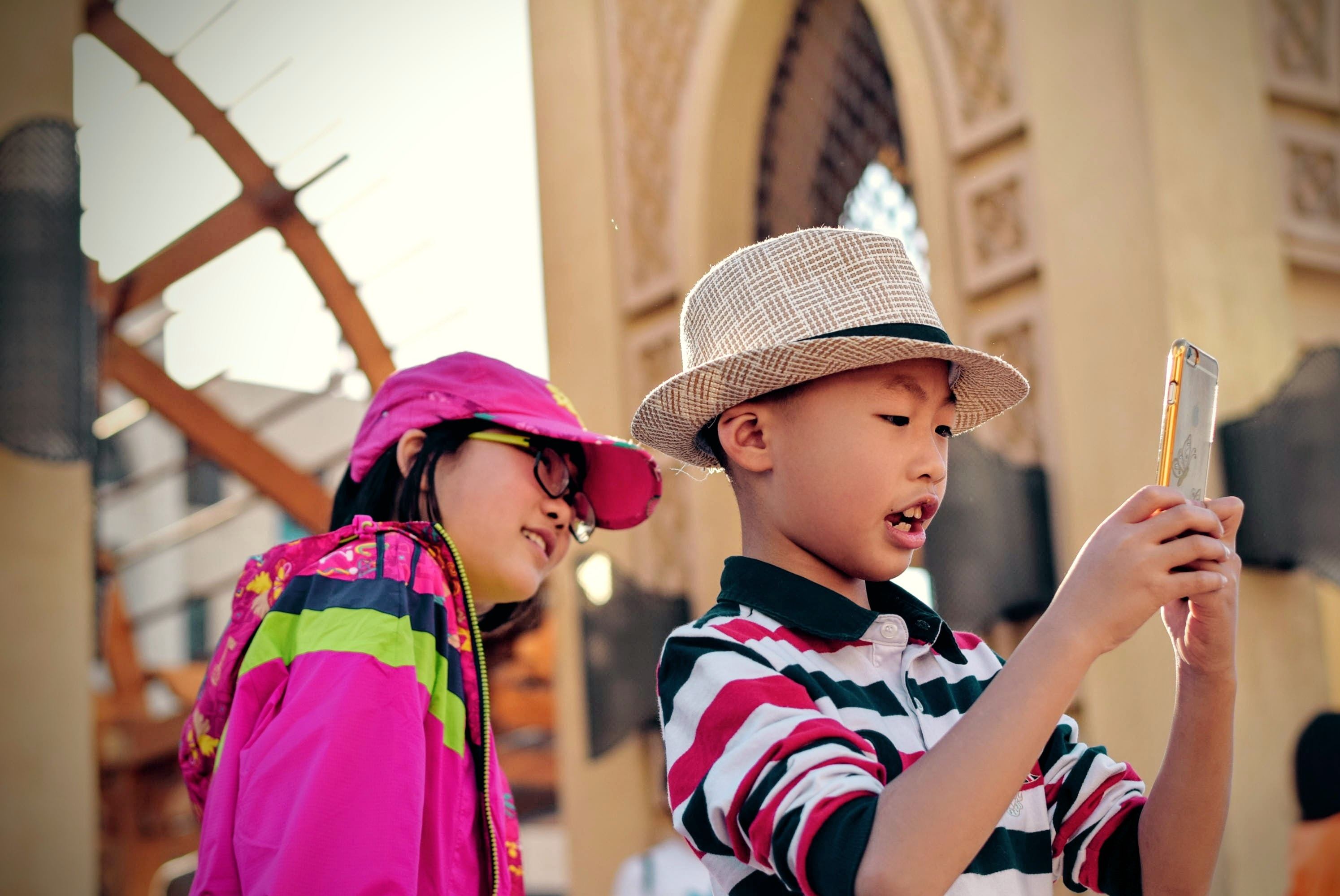For Google News
The CMO’s Guide to Chinese Social Media Marketing
By Lauren McMenemy on December 12, 2018
Western brands need to be careful about how they use Chinese social media marketing, as Dolce & Gabbana found out this month. Backlash on social media in China saw the luxury fashion brand cancel a planned event as users-including celebrities and influencers-took to social media to criticize their ad campaign featuring a Chinese model struggling to eat Italian food with chopsticks.
There are 911 million active social media users in China, compared with 207 million in the US, each spending an average of six hours a day browsing the internet. This audience is driven more by recommendations and references than any other audience in the world, meaning that people in China turn to social media early on in their buyer's journey.
OgilvyOne reports more than 55% of Chinese users participate in online discussions about brands across a range of social media networks. But Western brands who think they can control these discussions, or influence via Facebook or Instagram, should think again. China's social media landscape is totally unlike anything else.
The Impact of the Great Firewall
It's not just differences in culture and language that Western brands face with their Chinese marketing strategies. The very platforms on which they cultivate audiences are unique, too, thanks to the "Great Firewall of China," the unofficial name given to the Golden Shield Project.
Image attribution: Tim Gouw
Put up by the Chinese government, the firewall controls the information to which the population has access. It's also the reason why internet giants like Google and Facebook aren't in China-they advocate free access to information, and don't allow monitoring of user behavior. Instead, a unique ecosystem of China-only networks has evolved, shaped by the demands of the Chinese consumer.
Getting Started with Social Media in China
It's not as easy as jumping in and setting up an account, though, warns Yulia Pohlmann, co-founder of Market Entry Atelier. Pohlmann thought her experience as a digital marketer in Europe would help her when she moved to China; instead, she found an entirely different world.
"Chinese social media is so packed and is really fast, very dynamic," she says. "You're basically always catching up just to reach your customers."
Pohlmann found out the hard way that you have to learn quickly and stay on your feet. She advises people to stop and think before jumping in, and ensure you have the permission and ability to make the most of digital marketing in China.
First and foremost, make sure you're set up as a company in the country. Before you can create an official page on any of the big social media platforms, you need to obtain an Internet Content Provider License, and to get one of those you must have Chinese operations. Getting your license can take an average of twenty business days once you've submitted all the documentation to a hosting provider.
That means, says Pohlmann, that you need to have your corporate strategy and business set up correctly before you start marketing. Your ICP can also get you a website on the Chinese servers, which will speed up the site and make access much easier for those inside the country. In the past, Pohlmann has set up a mirror site in China-the same site, but hosted locally so that it passes the trust test.
Key Opinion Leaders: More Than Influencers
Image attribution: Raj Eiamworakul
You can't get anywhere in China without the help of a Key Opinion Leader, or KOL. Just as marketing influencers are holding more sway in the West, China's KOLs are the most powerful tool in any marketing kit-so much so that CMOs are focused on KOLs as a key strategic channel for social marketing success in China.
Peer-to-peer recommendations and word of mouth drive Chinese marketing, and a KOL recommendation can boost success exponentially. Take, for example, Givenchy's collaboration with WeChat influencer, Mr. Bags. He published an article announcing a sale of an exclusive pink handbag, limited to just 80 in the world. They sold out in 12 minutes.
Writing for Forbes, Kimberly A. Whitler notes that developing a KOL strategy is "essential for growth" for three reasons:
- KOLs can drive faster awareness than traditional marketing tactics
- KOLs help strengthen brand image through endorsement
- A KOL strategy, when effective, can deliver much better results at a fraction of the cost
Pohlmann experienced a 4x increase in interest in just ten days once she brought in KOLs while working with a technology company. But don't be swayed too much by numbers, warns Saurabh Upadhyay, Beijing-based director of marketing Shangri-La. Brands often see the huge successes others experience in China and are quick to jump in for themselves.
"While there are certainly success stories, there are also a lot of horror stories," Upadhyay says.
"China is very quick to adopt new tech advances. While the numbers of downloads are certainly very impressive, this alone does not translate well into improving bottom line or monetization processes."
The Networks to Watch
By now most Western marketers know about WeChat and Weibo-the two giants of Chinese social media boasting a combined total of 1.6 billion monthly active users-but there's an ever-evolving list of new and emerging sites to keep an eye on, too.
"We can't use just one channel to fit all marketing purposes," says Harry Chan, a digital marketer based in Hong Kong with experience taking global brands onto Chinese social media. "For example, if you want to sell an apple, WeChat may be best-but Baidu might be better for oranges. It really does depend on the audience, the objective, and everything else that's going on in the channels."
For that reason, Chan says Western brands should find local mainland partners to help their Chinese social media marketing efforts: "Promotional methods and regulations are always changing, and it can be hard to keep on top of the latest trend or rule from outside the country.
"But social media remains the best way to get to an audience in China. There is mass coverage, and you'll get responses fast."
Chan also warns that EVERYTHING should have a QR code. It might be considered old tech in the West, but you'll find QR codes all over China. When consumers scan them, they'll often be taken to a WeChat landing page which is optimized for conversions.
Channels Where Your Brand Needs to Be
With 1.08 million monthly active users and growing, WeChat is unique. There is a massive user base, but it's all highly targetable to a granular degree. Penetration in the 18-36 age group is 90%, but it reaches 98.5% of 50 to 80-year-olds throughout the country as well. Brands can engage in various ways, from branded hubs to mini-programs (Tesla has one that helps users locate charging stations). WeChat is the center point for information in China.
Then there's Weibo, often referred to as the Twitter of China. Launched in 2009, Weibo has become one of the most prominent sources of news for China; usage is increasing at more than 20% year-on-year. Daily active users average 184 million, with 93% accessing through mobile devices. More than 100 million messages are posted by users each day. It's essential to local strategy.
Live streaming: China's National Pastime
Deloitte estimates China's live streaming revenue will hit $4.4 billion by the end of 2018, up 86% from just two years ago. China's youth are immersed in live streaming culture, and it's much more mature than in the West. They view on an ever-growing list of platforms.
- Yizhibo: Once the live streaming partner to Weibo, Yizhibo was recently acquired by the more mature company. Its parent company also owns Miaopai, a video clip editing app, and the video-dubbing app Xiaokaxiu. It had seven million daily active users just one month after launch, more than 300 Chinese celebrities among them, and the demographics skew to young, tech savvy, and affluent females.
- Youku: An oldie but a staple, Youku is often described as China's YouTube and is a subsidiary of e-commerce giant Alibaba. Its name literally translates as excellent/cool.
- Tmall: A business to consumer e-commerce platform that's exclusively for brands, Tmall requires all sellers to be trusted and verified. Its live streaming platform is dominated by influencers. Celebrity live streams garner an average of 3.8 million interactions, while influencer live streams get 476,534 interactions.
- Ximalaya FM: an audio streaming platform with more than six million users every day. Brands are jumping into Ximalaya FM to create their own channels, or to partner with bigger channels and influencers.
A Platform for Every Niche
Image attribution: Bin Thiều
China has a growing list of niche platforms as interest in social media and mobile penetration continues to grow. These are just a few causing waves.
- Douban: an interest-oriented networking platform described as a "mishmash of Spotify, SoundCloud, IMDB, and MySpace". Users connect with each other based on their tastes, and can book movie tickets, download e-books, and discuss their favorites with fellow users.
- Little Red Book: Relatively new to the market, Little Red Book, or Xiaohongshu, is a beauty and lifestyle platform aimed squarely at the 18-35 year old female. More than 100,000 new users join it every day.
- DianPing: Like Yelp, but users don't just recommend restaurants-they go right down to granular levels, even voting for favorite dishes.
Test and Learn for Success
But just being on these platforms will not equal success. As with Western networks, you'll need to get to know what works for your audience and your brand.
"For me when I think about China, the only thing I have in mind is learning," says Yulia Pohlmann. "You have to learn and analyze what is going on, then adjust your strategy. It's always a process of learning.
"In China, you can never sit and rest on the knowledge you already have. Even if something worked before, it doesn't mean it will work again. Think, read, analyze, do. Experiment with a little bit of budget; if it works, create more. Learn by doing. It probably sounds scary, but at the end of the day it's a great market with lots of opportunities for growth."
It all comes down to this: Chinese social media marketing is different, but it shouldn't be intimidating. Many of the same tactics employed in the West still apply, but they're working on different platforms. Just remember the golden rules of Chinese social media marketing:
- Get set up right: You'll need to be "official" for consumer trust, which means your business set-up needs attention first.
- Be personal: Much of Chinese social media is small-scale messaging rather than spray-and-pray broadcasting. Provide tailored, meaningful content for your users, and incorporate your customer service and instant messaging into the strategy.
- Get creative: Quirky and creative will get your campaign trending, but don't take it too far. Be mindful of cultural sensitivities.
- KOLs are king: Perhaps more so than anywhere else, working with influencers can make or break your social media success in China. Work with the right people, and form strong bonds with them so they know and trust your brand first.
For more stories like this, subscribe to the Content Standard newsletter.
Featured image attribution: Alexandre Chambon




